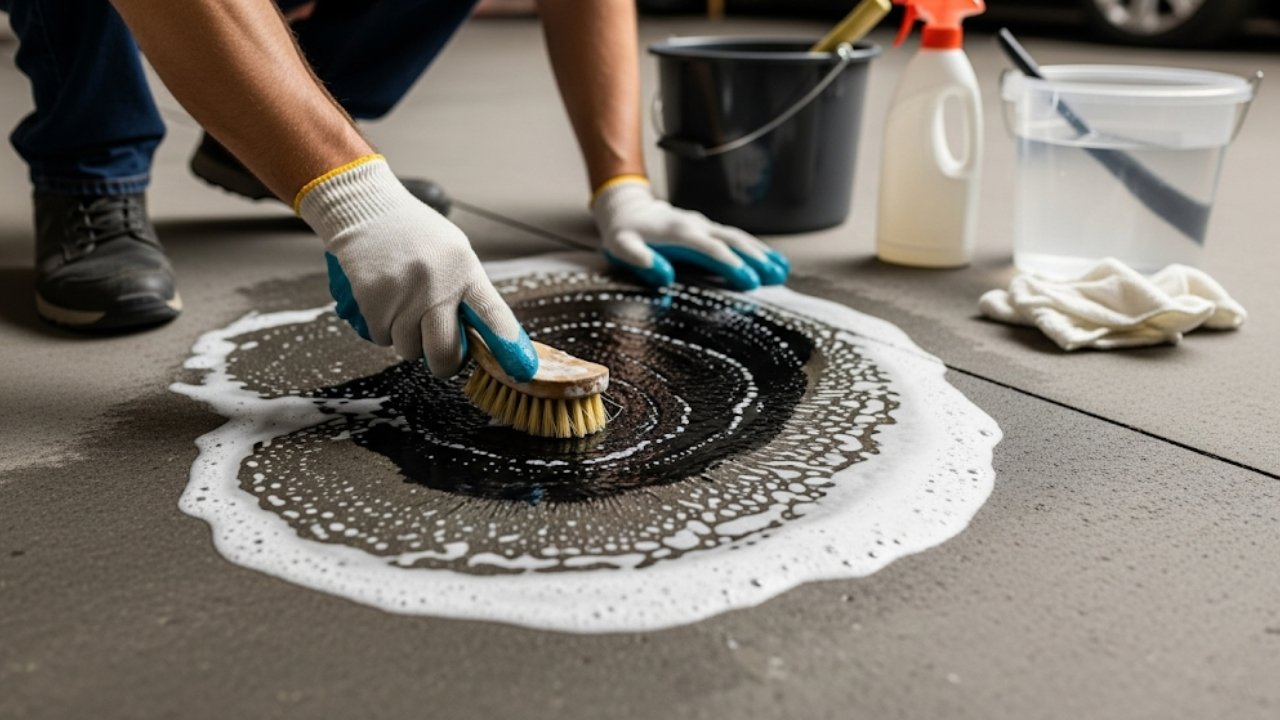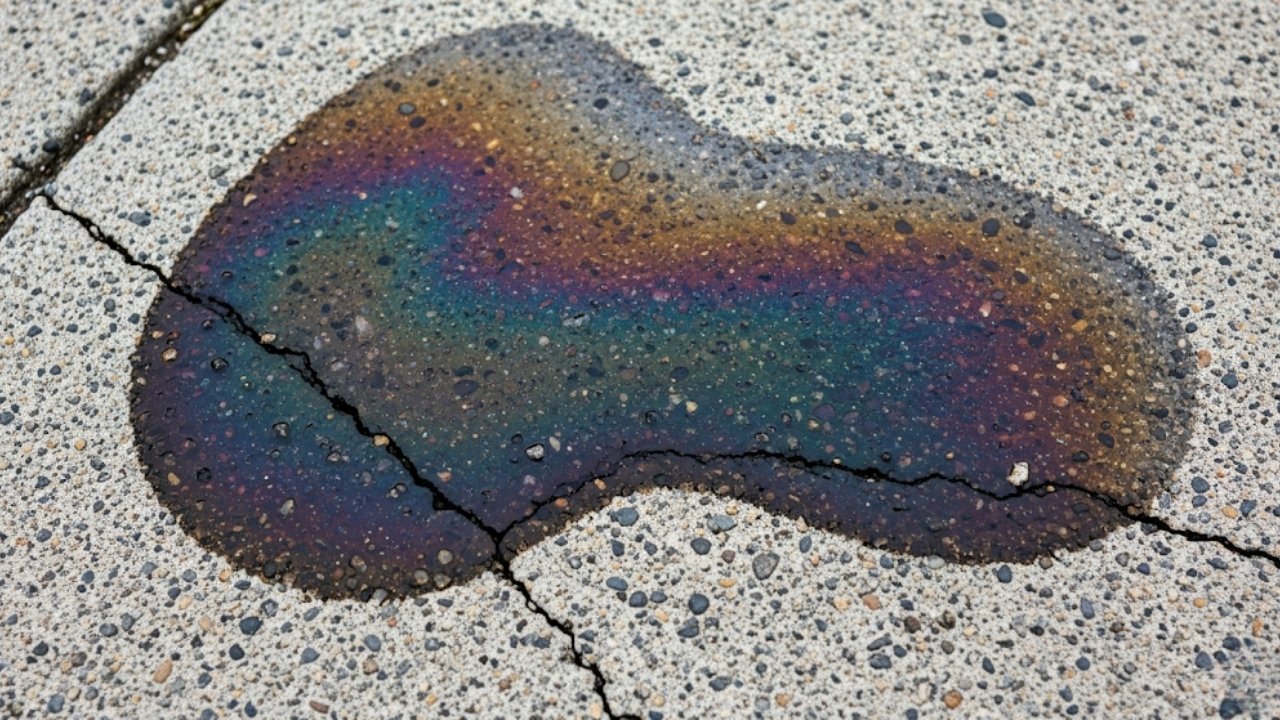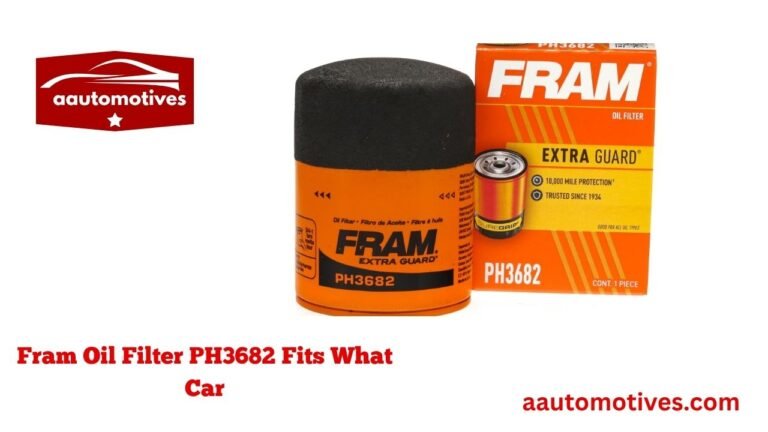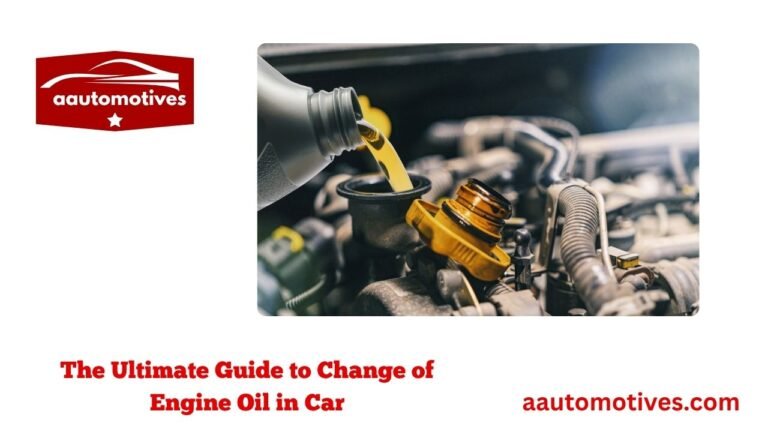How to Remove Car Oil from Concrete: A Friendly Guide

Spilling car oil on concrete feels like dropping ketchup on your favorite white shirt—messy, stressful, and stubborn to clean. If you’re like me, you’ve probably backed out of your driveway and caught a glimpse of that dark, slick patch where your car sat overnight. It’s not just an eyesore—it can damage the surface, attract dirt, and even lower your home’s curb appeal. But don’t worry. Whether it’s fresh or dried up like week-old coffee, removing car oil from concrete is possible, even if it seems like mission impossible at first.
This article walks you through every step to handle it. I’ll share tips I learned the hard way, talk about what worked (and didn’t), and explain each method clearly and simply. You won’t need to be a cleaning wizard or spend a fortune. Just a little patience, the right materials, and a touch of elbow grease.
Let’s break it down.
In This Article
- 1 Why Car Oil Stains Concrete and Why You Should Care
- 2 First Things First: Assess the Oil Stain
- 3 Quick Reaction: How to Handle a Fresh Oil Spill
- 4 DIY Method #1: Using Baking Soda and Dish Soap
- 5 DIY Method #2: Try the Cola Trick
- 6 Method #3: Using a Commercial Degreaser
- 7 Bonus Method: Poultice Paste for Old Oil Stains
- 8 Pressure Washing: When You Need Extra Muscle
- 9 Enzyme Cleaners: Eco-Friendly and Effective
- 10 Professional Help: When Nothing Else Works
- 11 How to Prevent Future Oil Stains
- 12 Quick Summary Table: What Works Best and When
- 13 FAQs: Answers to Common Oil Stain Questions
- 13.1 1. How long does it take to remove car oil from concrete?
- 13.2 2. Can I use bleach to remove oil stains from concrete?
- 13.3 3. What’s the best homemade cleaner for oil stains?
- 13.4 4. Will sealing my concrete prevent oil stains?
- 13.5 5. Can motor oil permanently stain concrete?
- 13.6 6. Is it safe to use acetone or lacquer thinner on concrete?
- 13.7 7. How do I clean oil off stamped or decorative concrete?
- 13.8 8. Can WD-40 remove car oil stains from concrete?
- 14 Final Thoughts: You’ve Got This
Why Car Oil Stains Concrete and Why You Should Care

If ignored, an oil stain:
-
Makes your driveway look dirty and neglected
-
Can become slippery and dangerous when wet
-
May weaken concrete over time by trapping grime
-
Could even decrease property value if stains are large or old
So, learning how to remove car oil from concrete isn’t just about vanity—it’s about keeping your space safe and well-maintained. Plus, it’s surprisingly satisfying to see a tough stain disappear!
First Things First: Assess the Oil Stain
Before you grab the nearest cleaner, take a few moments to check the situation. Not all oil stains are created equal. Here’s what to consider:
| Stain Type | Description | Best Approach |
|---|---|---|
| Fresh Spill | Wet and shiny, hasn’t dried yet | Absorb quickly, then clean |
| Dried Stain | Brown or black patch, may be sticky | Scrub with degreaser or soda |
| Old, Set-in Stain | Deep in concrete, often faded or dark | Use poultice or power cleaner |
| Repeat Spots | From ongoing leaks or drips | Fix leak first, then treat stain |
I once ignored a small drip spot thinking it was “just a little oil.” Fast forward a month, and it had spread and darkened. Lesson learned: tackle it as soon as you notice it.
Quick Reaction: How to Handle a Fresh Oil Spill
Timing matters. A fresh car oil spill is the easiest to deal with—if you act fast. Here’s a quick guide:
Steps to Clean a Fresh Oil Spill
-
Blot Immediately:
Grab paper towels, rags, or sawdust and soak up as much oil as possible. Don’t rub—it spreads the stain. -
Cover with Absorbent:
Use kitty litter, cornstarch, or baking soda. Cover the spot thickly and let it sit for at least 30 minutes. Overnight is even better. -
Sweep It Up:
After it has absorbed the oil, sweep it up and dispose of it properly. -
Scrub the Spot:
Mix dish soap (like Dawn) with hot water. Scrub using a stiff bristle brush, not a wire one—it can scratch. -
Rinse with Water:
Hose it down or use buckets of clean water to rinse off the soap and residue.
Tip: Avoid using high-pressure water on fresh concrete—it can cause etching if you’re not careful.
You’d be surprised how effective basic stuff from your kitchen can be. I once used baking soda and Dawn on a day-old stain and got almost 80% of it out with one try.
DIY Method #1: Using Baking Soda and Dish Soap
This one’s a classic. It’s cheap, safe, and uses things you probably already have.
What You’ll Need
-
1 cup of baking soda
-
A few drops of liquid dish soap
-
Hot water
-
A hard-bristled brush
-
Optional: White vinegar (for extra power)
Steps
-
Sprinkle a generous amount of baking soda directly on the stain.
-
Add a few squirts of dish soap.
-
Pour hot (not boiling) water over it to activate the mix.
-
Scrub hard in circular motions.
-
Let it sit for 10–15 minutes.
-
Rinse thoroughly with water.
This method works best for light to medium stains. For set-in oil, you may need something stronger—but it’s a great place to start.
DIY Method #2: Try the Cola Trick
Okay, this one sounds like a prank—but it’s surprisingly effective. If you’ve got a couple of bottles of cola, this method is worth a shot. The phosphoric acid in cola can break down grease.
Steps
-
Pour cola over the stained area until fully soaked.
-
Let it sit for 1–2 hours.
-
Scrub the area with a stiff brush.
-
Rinse with clean water.
Does it work on all stains? No. But for older ones that haven’t set too deep, it can lighten them significantly. Plus, it’s a fun experiment—especially if you’ve got some expired soda in the fridge.
Method #3: Using a Commercial Degreaser
When home methods don’t cut it, a commercial degreaser steps in. These are specifically designed to break down petroleum-based products like car oil on concrete.
Top Degreaser Brands to Consider
-
Simple Green Oxy Solve
-
Oil Eater Cleaner/Degreaser
-
Zep Driveway Cleaner
-
Purple Power Industrial Degreaser
How to Use
-
Apply degreaser directly to the stain (follow label instructions).
-
Let it sit for 10–30 minutes, depending on the severity.
-
Scrub using a stiff brush.
-
Rinse thoroughly.
These products are more aggressive, so wear gloves and don’t let them sit too long. They’re great for driveways, garages, and even concrete patios.
Bonus Method: Poultice Paste for Old Oil Stains
Here’s a method I swear by when dealing with stains that just won’t leave—like that annoying guest who overstays their welcome.
What’s a Poultice?
A poultice is a thick paste made from an absorbent material and a solvent. You apply it to the stain, cover it, and let it draw the oil out over time.
DIY Poultice Mix
-
1 cup of diatomaceous earth or unscented kitty litter
-
Enough acetone or lacquer thinner to make a thick paste
Steps
-
Mix the ingredients into a thick, peanut butter-like paste.
-
Spread it over the stain about ½ inch thick.
-
Cover with plastic wrap and tape down edges.
-
Let it sit for 24–48 hours.
-
Remove and rinse thoroughly.
Warning: Use in a well-ventilated area and wear gloves. Acetone is flammable and strong-smelling.
Pressure Washing: When You Need Extra Muscle
Sometimes, regular scrubbing just doesn’t cut it. That’s where pressure washing comes in. It’s like calling in the big guns when elbow grease isn’t enough. If your stain is old, large, or simply being stubborn, a pressure washer can help blast away the grime.
Steps to Pressure Wash Car Oil from Concrete
-
Pre-treat the stain with a degreaser or baking soda paste.
-
Let it sit for 10–15 minutes so it can break down the oil.
-
Use a pressure washer with at least 2,000–3,000 PSI.
-
Spray in sweeping motions from multiple angles.
-
Rinse thoroughly and repeat if needed.
Pro Tip: Start with the lowest pressure setting and gradually increase. Too much force too soon might damage your concrete surface, especially if it’s newly poured.
One time, I rented a pressure washer after trying everything else. I was skeptical, but it cleaned a huge dark stain that had been there for months. Sometimes, the noise and splash are worth it!
Enzyme Cleaners: Eco-Friendly and Effective
Looking for a greener solution? Enzyme-based cleaners work like a charm. They break down oil molecules naturally and are safe for pets, kids, and your garden. They’re not instant like chemical degreasers, but they’re fantastic for deep cleaning over time.
Best Enzyme Cleaners for Concrete Oil Stains
-
ACT Concrete Cleaner
-
Oil Lift Organic Degreaser
-
Terminix EcoClean
How to Use Enzyme Cleaners
-
Sweep and clean loose dirt first.
-
Apply the enzyme cleaner as directed.
-
Let it sit—some require 24 to 48 hours.
-
Scrub gently and rinse with water.
Enzyme cleaners are especially good for repeat stains or maintaining cleanliness over time. I once used ACT Concrete Cleaner on an old garage slab. It didn’t work overnight, but in two weeks of light brushing, the oil had almost vanished.
Professional Help: When Nothing Else Works
There’s no shame in calling for backup. If your stain won’t budge after trying everything or if it’s on decorative or stamped concrete, a professional cleaner might be the best bet.
What Professionals Offer
-
Commercial-grade degreasers
-
Industrial power washers
-
Safe chemical treatments
-
Color-matching for stained or patterned concrete
Yes, it costs more. But if you’re selling your house, prepping for guests, or just want the peace of mind—it’s worth it. Just make sure you hire a licensed and insured service, and check reviews beforehand.
How to Prevent Future Oil Stains
The best way to deal with oil stains? Don’t let them happen in the first place! Here are some smart, easy ways to prevent a repeat mess.
Preventative Tips
-
Fix oil leaks in your vehicle ASAP
-
Use drip pans or oil-absorbing mats under your car
-
Apply a concrete sealer to protect the surface
-
Park in the same spot to limit stain spread
-
Keep a bottle of baking soda and dish soap handy
I now keep a cheap rubber mat in my garage and a small stash of kitty litter just in case. It’s saved me so many times from a full-blown cleanup job.
Quick Summary Table: What Works Best and When
| Method | Best For | Pros | Cons |
|---|---|---|---|
| Baking Soda + Soap | Fresh/light stains | Cheap, natural | May not work on old stains |
| Cola Trick | Medium stains, fun DIY | Easily available, budget-friendly | Sticky cleanup, may not be 100% effective |
| Degreaser | Tough or large stains | Fast, powerful | Harsh chemicals, gloves needed |
| Poultice | Deep, old oil spots | Pulls out oil from within | Time-consuming, requires setup |
| Pressure Washing | Large areas, set-in grime | High power, fast results | Equipment needed, may damage surface |
| Enzyme Cleaner | Eco-friendly maintenance | Safe, long-term solution | Slower results, pricier |
| Professional Cleaning | Worst-case stains or big events | Deep clean, hassle-free | Can be costly |
FAQs: Answers to Common Oil Stain Questions
1. How long does it take to remove car oil from concrete?
It depends on the method and the age of the stain. Fresh spills can be cleaned in 30 minutes, while older ones may take a few days or require repeated treatments.
2. Can I use bleach to remove oil stains from concrete?
No. Bleach is good for mold and mildew but ineffective on car oil stains. It also won’t break down grease molecules.
3. What’s the best homemade cleaner for oil stains?
A mix of baking soda, dish soap, and hot water is a solid homemade solution. It’s safe, cheap, and works for newer stains.
4. Will sealing my concrete prevent oil stains?
Yes! A concrete sealer adds a protective layer that resists absorption. It makes oil easier to clean and reduces staining.
5. Can motor oil permanently stain concrete?
If left untreated, yes. It penetrates the pores of concrete and becomes very difficult to remove. That’s why fast action is key.
6. Is it safe to use acetone or lacquer thinner on concrete?
Yes, but with care. These are powerful solvents. Use gloves, avoid inhaling fumes, and rinse well after use.
7. How do I clean oil off stamped or decorative concrete?
Use gentle methods like enzyme cleaners or poultices. Avoid high-pressure washing or harsh chemicals, which can ruin patterns or colors.
8. Can WD-40 remove car oil stains from concrete?
Interestingly, yes! WD-40 breaks down grease. Spray it on, wait 15–30 minutes, then scrub and rinse. It’s not perfect, but worth trying.
Final Thoughts: You’ve Got This
Learning how to remove car oil from concrete can feel like a messy task—but it doesn’t have to be stressful. Whether you’re scrubbing with baking soda, trying out an enzyme cleaner, or breaking out the power washer, the key is to act fast and stay patient. Every stain has a solution.
We’ve all had those “oops” moments with cars leaking in the driveway or a rogue oil change that went south. The good news? You now know exactly what to do, from fresh spills to those ancient, cranky blotches that seem impossible to erase.
Just remember:
-
React quickly.
-
Try simple methods first.
-
Step up to heavy-duty tools if needed.
-
Protect your concrete moving forward.
Concrete doesn’t have to stay stained. With a little effort and the right technique, it can look good as new again. Go on, give that driveway the love it deserves!






